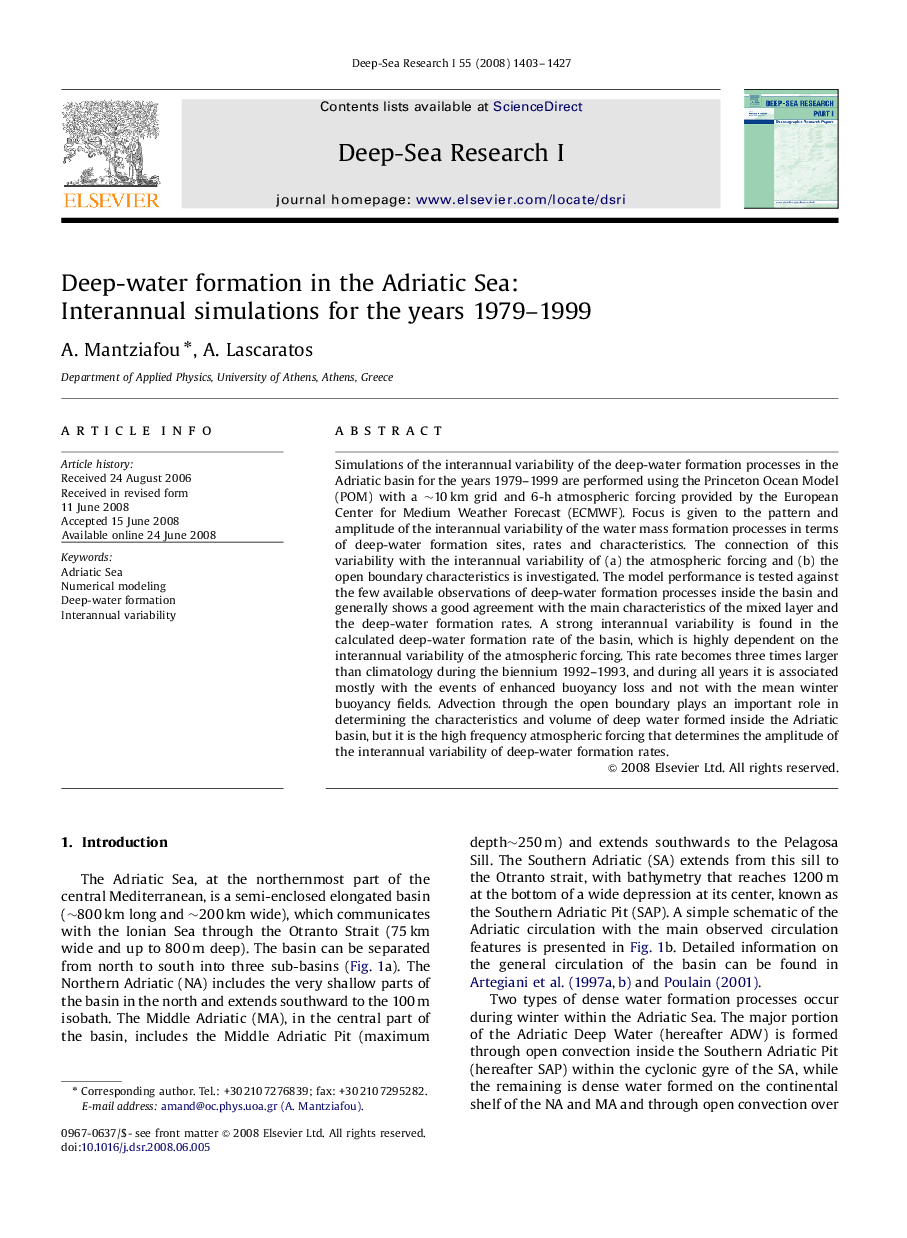| Article ID | Journal | Published Year | Pages | File Type |
|---|---|---|---|---|
| 4535099 | Deep Sea Research Part I: Oceanographic Research Papers | 2008 | 25 Pages |
Abstract
Simulations of the interannual variability of the deep-water formation processes in the Adriatic basin for the years 1979-1999 are performed using the Princeton Ocean Model (POM) with a â¼10Â km grid and 6-h atmospheric forcing provided by the European Center for Medium Weather Forecast (ECMWF). Focus is given to the pattern and amplitude of the interannual variability of the water mass formation processes in terms of deep-water formation sites, rates and characteristics. The connection of this variability with the interannual variability of (a) the atmospheric forcing and (b) the open boundary characteristics is investigated. The model performance is tested against the few available observations of deep-water formation processes inside the basin and generally shows a good agreement with the main characteristics of the mixed layer and the deep-water formation rates. A strong interannual variability is found in the calculated deep-water formation rate of the basin, which is highly dependent on the interannual variability of the atmospheric forcing. This rate becomes three times larger than climatology during the biennium 1992-1993, and during all years it is associated mostly with the events of enhanced buoyancy loss and not with the mean winter buoyancy fields. Advection through the open boundary plays an important role in determining the characteristics and volume of deep water formed inside the Adriatic basin, but it is the high frequency atmospheric forcing that determines the amplitude of the interannual variability of deep-water formation rates.
Related Topics
Physical Sciences and Engineering
Earth and Planetary Sciences
Geology
Authors
A. Mantziafou, A. Lascaratos,
